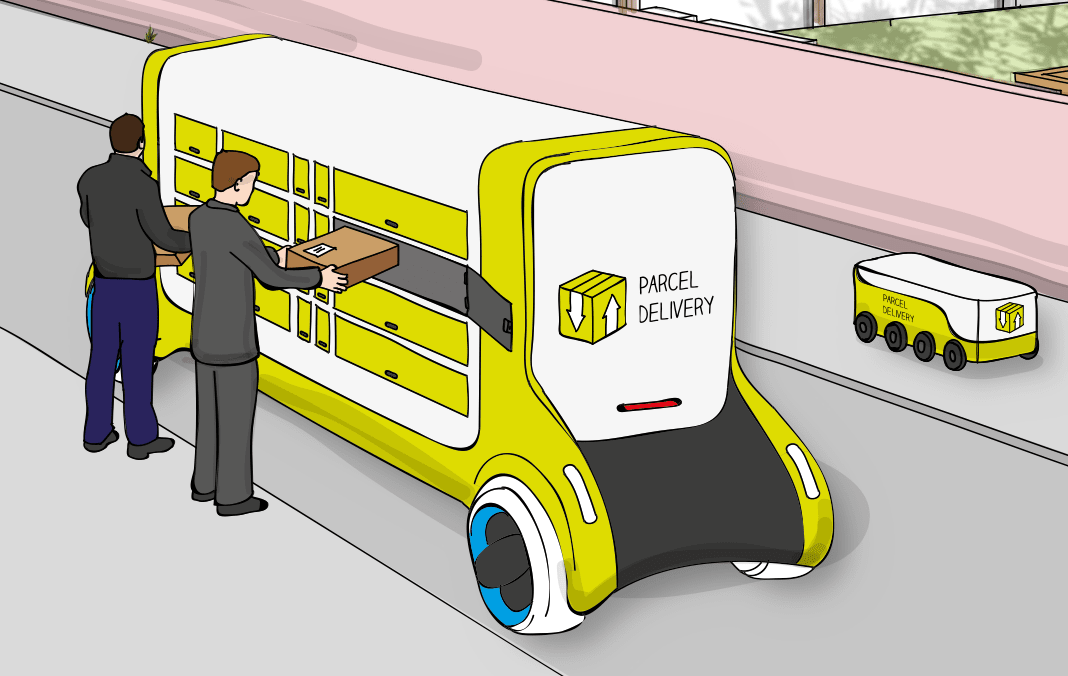ar·ti·fi·cial in·tel·li·gence noun
the theory and development of computer systems able to perform tasks that normally require human intelligence, such as visual perception, speech recognition, decision-making, and translation between languages.
Deep learning, autonomous vehicles and Westworld bots may be trending on Twitter, but neural nets and artificial intelligence showed up decades ago. John McCarthy coined the term “artificial intelligence” back in 1955, and advances in the field have been changing every aspect of our business and personal lives ever since — you just haven’t noticed.
60 years ago, the idea of creating a machine that could compete with a grandmaster at chess was thought to be the pinnacle of human intelligence. But Deep Blue beat Gary Kasparov 20 years ago, and no one has batted an eye since.
“As soon as it works, nobody calls it AI anymore” — John McCarthy
Recent developments in connectivity, bandwidth and computing power have been a stepwise improvement in functionality, and Watson’s Jeopardy win was a stepwise improvement in PR. But make no mistake the Artificial Intelligence Revolution is already here, and saying that it will “disrupt” our current supply chain is an gross understatement.

Self-driving cars and autonomous drones may grab headlines and ambitious investor dollars, but an autonomous supply chain is still decades away. And even when we have autonomous, route-optimized robots delivering goods…there will still be humans at both ends of the supply chain. Yes, biological, irrational, humans — shippers, supply chain execs, warehouse managers, and end customers will still need to interact with this future “autonomous” supply chain. So while, yes, I fully expect to leverage level 4 autonomous vehicles in supply chain decisions in the next ten years, I just do not plan on relying on them.
Technology develops along evolutionary principles. Progress is incremental; it happens on the margins. So for the rest of this post lets backseat forecasts of driverless fleets, and talk about how AI is deployed today.
Buzzwords clarified (quickly)
AI is the parent term for any system that emulates human actions like speech, vision, and decision making. Along those functional lines, we talk about fields like natural language processing, machine vision, and recommendation engines. Natural language processing (NLP), for instance, is interpreting a stream of text, and breaking in down into its component entities and intentions. Today anyone can access NLP engines via services like API.ai, Google’s Cloud Platform, or IBM’s Watson.

Then we have the core concept of “deep learning”. Deep learning is based on those neural nets architected in the 1950s. It allows a program to improve as it interprets more data. But all you really need to know, is that deep learning is the dominance of data over algorithms. In other words, big data beats clever algorithms, every time.
"#deepLearning is the dominance of #data over #algorithms" Phenomenal podcast from @a16z https://t.co/8HpkuZLYMS
— Parker Holcomb (@parkerHolcomb) November 11, 2016
Then we have applications. If you ask Chris Nicholson of SkyMind, he identifies three core competencies of AI in industry today — fraud detection, recommendation engines and predictive analytics. For me, these applications fall under a blanket of deep personalization. It’s about taking billions of data points, cross referencing them with the data that’s relevant to the user, and producing an actionable insight for the user. Furthermore, its about delivering that insight to the preferred channel at the preferred time.
A Logistics Example — Risk Management
I recently spoke with supply chain executive Brian Herrick of Goodman Manufacturing about the ways that SC execs are leverage machine learning and big data. Herrick said that, anecdotally, 50% of the webinars he participates in discuss using big data for risk management (he belongs to 4 supply chain organizations and tunes in weekly).
“Services like MetricStream or RiskMethods will collect data from 100's of millions of sources, distill it based on your supplier portfolio and provide notifications and recommendations as necessary. For example, if there is a labor strike in Thailand, it can suggest an alternative supplier that will keep your supply chain moving.”
We all know that bottlenecks and uneven software capabilities are a huge problem for logistics (some even call solving horizontal software integration the “holy grail” of transportation systems). I asked Herrick how he deals these bottlenecks and how he wants the insights delivered — does he want ERP integration? conference call? an email report? an API web hook?
“Best part, they just send an SMS alert to the stakeholder”
Just an SMS to the stakeholder. Exactly. Excel charts are cool; web dashboards are better; but in my opinion the holy grail is something like Inbox by Google’s recommended replies — understand the context and provide a few suggested actions.

My father — a supply chain rockstar himself — used to tell me that exceptional employees bring managers “decisions to verify, not problems to solve.” This perfectly encapsulates my holy grail — an AI agent that intimately knows my needs, digests the relevant information, and brings me a decision to verify. (He also always used to say “anticipate my needs,” which at this moment feels applicable, but on reflection I’m not sure it was professional advice, or just a reminder to cut the lawn. Anyway, it fits.)
Today, I’ll take a notification with 3 suggested suppliers that I can choose between. Tomorrow, I’d like a notification that the decision has already been made — perhaps with a confidence score that my agent has “anticipated my needs.”
What’s here, what’s next — a conversation
Last week I had a conversation with Ashley Hathaway, Developer Evangelist with IBM Watson. Ashley is a firm believer that speech is the obvious next interface. Most of us who have seen Her, or heard of Siri, will probably agree.
“I don’t want to turn on a light bulb without a voice command in 2018” — Ashley Hathaway
In the startup world, we talk about using speech and text as a “conversational interface,” which is a distinct approach from a website or a mobile app. In my opinion, the *primary advantage of a conversational interface is that there is no need to train, or onboard the user. No need to watch a demo video, just do what comes naturally — talk.
*No app downloads or logins are a close second.
If you dive deeper into the AI circle, you might hear about the shift to conversation as the “3rd runtime” (first two being web, mobile). And while the term “chatbot” probably has most brand value right now, I prefer to use a term that doesn’t connote just a better SmarterChild. I’m going to start rolling with the term AIgent.
“Conversation first” is the new “mobile first”
I believe designing and architecting AIgents for the 3rd runtime represents a fundamental shift, a 0 to 1, if you will. While we are decades (centuries?) away from superintelligent AIgents like Samantha, there are conversational agents currently living among us.
Hathaway : “Transaction based systems like x.ai are working today; but general conversationalists are way down the road”.
If you haven’t heard of it, x.ai is an “AI personal assistant” that schedules meetings by just cc’ing “Amy”. The company has raised over $30M and recently came out of beta. There is nothing to install, no “buy in” from the recipient, and often (or ideally?) the recipient of the message does not even know they are interacting with an AIgent.
I intimately know the power of bots first hand. In my first business, All College Storage, I built SMS based AIgents to handle funnel optimization, customer questions, and dynamic rescheduling of the drivers based on real-time customer availability.

There is no faster way to gather information than by just asking “Hey, are you available for pickup in next 20 minutes?” Instead of getting responses in hours or minutes, you get responses in seconds. Adding a barrier of an app download or a website login is a huge waste — in other words, AIgents Six Sigma your customer feedback loop.
All this goes without saying that the customers have little idea its a bot. It’s just a text message. AIgents are not only coming, they’re here. Even UPS gets it. But again, you just haven’t noticed.
"I found myself wondering whether I was chatting with a person, a bot...Then wondered if it even mattered." https://t.co/HMP0weZK1B
— Parker Holcomb (@parkerHolcomb) November 7, 2016
Language Revolution 2.0
“Hey Parker, want your package at work in 30 minutes, or at home in 2 hours?”
When language evolved in humans it represented a fundamental shift in human organization. Language allowed us to leave the savannah and dominate the globe. Telling stories allowed us to time travel, learn without doing, collaborate with peers, argue about our ideas, and yes, allocate resources. If Superintelligence took a longer view of human history, I assume that it would place the Language Revolution before the the Agricultural and Industrial as the first true human disruption.
Machine vision will be awesome for self-driving cars, haptic gloves will make for a great VR experience, but just like language separated modern humans from their bipedal ancestors, I believe that the dominance of natural language systems will be the true inflection point in the artificial intelligence story.
I fully expect to receive an autonomous drone delivery in the next decade; I just expect to reschedule that drone by talking to it.

